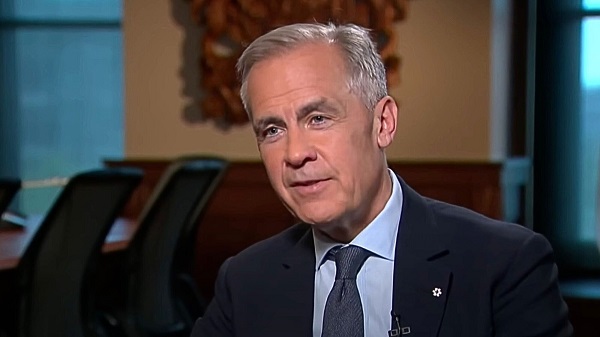News
School Winding Down, Downtown Farmer’s Market, Semis Crash!
3:11 pm – Lacombe City Council learned this week that the Lacombe Police Service saw increased calls for service for property crimes, family disputes and injury collisions over the past year. They also told council that there has been a decrease in drug charges, impaired driving and break and enter incidents. Read More.
3:04 pm – Lacombe City Council has approved new subdivision design guidelines moving forward. Read More.
For more local news, click here!
11:38 am – Brent Sutter, General Manager/Head Coach of the Red Deer Rebels Hockey Club, announced the selection of forward Kristian Reichel in today’s Canadian Hockey League Import Draft. Read More.
10:33 am – Innisfail Town Council has approved a number of changes for 56th Street. Details Here.
10:21 am – The Town of Sylvan Lake is continuing to work with the Summer Village of Norglenwold in it’s Annexation efforts. Read More.
For more local news, click here!
10:00 am – Your chance to improve your money managing skills happens at the Penhold Multi-Plex during a Financial Literacy Workshop starting at 7 pm tonight. Read More.
9:40 am – Downtown Red Deer will be pulsating today with live music on the Ross Street Patio from 4:30 – 6:30 pm today. Details Here.
9:35 am – Farm fresh produce from Central Alberta farms will be at Red Deer’s ATB Financial Downtown Market from 3:30 – 6:30 today. Read more.
For more local news, click here!
9:26 am – Red Deer’s annual Mayor’s Garden Party has been relocated to the Collicutt Centre today as a result of the inclement weather conditions expected this afternoon. Read More.
8:55 am – Get through the mid-week hump by checking out some live music at the Alexander Way Parklet today from 11:30 – 1:00 pm. Details Here.
8:36 am – Blackfalds RCMP are asking for the public’s help in finding 55 year old Gordon Denton, who was last seen on June 25th. Read More.
For more local news, click here!
8:27 am – Stettler RCMP responded to a report of 2 semi’s involved in an MVC at the intersection of Hwy 11 and Hwy 21 around 12:30 pm on Tuesday, June 27th. Mounties say one semi was travelling Northbound on Hwy 21 with the other travelling Westbound on Hwy 11. One of the semi’s failed to obey a stop sign, proceeding into the intersection causing the collision. Both drivers were taken to hospital with what is believed to be non-life threatening injuries. The investigation is ongoing and charges are pending.
8:15 am – The Downtown Farmer’s Market means road closures in the city’s core today. Details Here.
8:05 am – Thousands of Central Alberta students are wrapping up the school year with many fun activities planned for their last full day of school today. At École Mother Teresa School in Sylvan Lake, Grade 3-5 students will showcase their many talents at the Elementary Talent Show being held in the Fine Arts Room. At Maryview School in Red Deer, the school will recognize student accomplishments over the past month and entire school year at a special “Shining Stars” Year-end Awards Assembly. At St. Martin de Porres School in Red Deer, students will participate in the final CREATE (Children Regularly Engaged Actively to Excel) Session of the year. Students will choose 3 sessions to participate in which they will focus on active living. The school will also hold the final assembly of the year with fine arts presentations, SMART draws, a year-end slideshow and presentations made to staff who are leaving.
Daily Caller
Watch As Tucker Carlson And Glenn Greenwald Get A Good Laugh Over CNN Pretending Biden’s Decline Is Breaking News


From the Daily Caller News Foundation
By Hailey Gomez
During a podcast Friday, Daily Caller News Foundation co-founder Tucker Carlson and independent journalist Glenn Greenwald couldn’t stop laughing over CNN’s sudden realization of former President Joe Biden’s mental decline.
CNN’s Jake Tapper along with Axios’ Alex Thompson released their book, “Original Sin,” on May 20, which details Biden’s cognitive slide over the last four years — a concern Republicans had raised even before the 2020 election. While appearing on “The Tucker Carlson Show,” Carlson joked that Greenwald had been “scooped” by CNN on Biden’s mental fitness.
“So you are, I think, the dean of alternative media. You’ve been doing this longer than anybody that I know personally. So it must be a little weird to get scooped by CNN on Joe Biden’s dementia, like you had no idea,” Carlson said. “None of us knew.”
“None of us knew,” Greenwald teased. ” There was that debate, and we were all shocked, but we were told he had a cold. So I was like, ‘OK, he’s on some cold medication. Who hasn’t been there before? It makes you a little dragged, a little groggy, a little just like dragged.’ But no, now Jake Tapper has uncovered the truth. It turns out Joe Biden was in cognitive decline.”
Sources told Tapper and Thompson that Biden’s mental fitness had declined rapidly during his time as president, with his mental state becoming so severe at one point that aides discussed putting him in a wheelchair.
WATCH:
Tapper has faced pushback from both Democrats and Republicans over the timing of his book and the revelations it includes. The CNN host has long defended the former president.
Carlson went on to joke with Greenwald about how he believed Tapper gathered the material for the book.
“Just a hardcore shoe leather investigative reporting,” Greenwald joked. “He’s working his sources, calling all the people in Washington, digging up FOIA documents.”
“It’s one of those things where you kind of can’t believe what you’re witnessing because Jake Tapper is pretending to have uncovered a scandal that he himself led the way in the media, or one of the leaders in the media, in covering up,” Greenwald added. “To the point where if somebody would go on his show and say ‘Joe Biden is obviously in cognitive decline.’ He would say ‘How dare you bully kids who stutter?’”
Greenwald went on to reference how Tapper had accused President Donald Trump’s daughter-in-law, Lara Trump, of “mocking” the former president over his stutter during a 2020 interview.
Despite Lara Trump pointing to what she believed were signs of Biden’s problems, Tapper dismissed her remarks at the time, saying she had “no standing to diagnose somebody’s cognitive decline.”
In addition to Lara Trump, Tapper also dismissed former Democratic presidential candidate Dean Phillips during a 2024 interview after Phillips expressed his “concerns” about Biden running for a second term.
“Obviously, he wanted Biden to win desperately and would not tolerate anyone going on the show and saying that Biden was in cognitive decline,” Greenwald said. “Now he’s making millions of dollars off a book.”
Following the media coverage of Tapper’s and Thompson’s book, Biden appeared to tell reporters on Friday he could “beat the hell out of” the two journalists.
International
Bongino announces FBI will release files on COVID cover up, Mar-a-Lago Raid and more

 MxM News
MxM News
Quick Hit:
FBI Deputy Director Dan Bongino announced that the bureau will begin releasing information on a number of controversial investigations long shielded from public view.
Key Details:
- Bongino said the FBI is clearing information on high-profile cases, including COVID, Crossfire Hurricane, and the Trump Mar-a-Lago raid.
- The bureau is actively working with the DOJ on releasing Epstein case details and cracking down on child sexual abuse content.
- Bongino dismissed media attacks on FBI Director Kash Patel as “verifiable lies” and accused the press of fabricating stories.
Diving Deeper:
FBI Deputy Director Dan Bongino disclosed on Saturday that the bureau will begin releasing information previously kept under tight wraps, including cases that many Americans believe were swept under the rug for political or institutional protection.
Bongino, a former NYPD officer, Secret Service agent, and outspoken conservative commentator, took to X to announce that his office has already started cooperating with Congress and the public by providing long-requested information. Among the cases he cited: the attempted assassination of Rep. Steve Scalise, the Nashville Christian school shooting, the Crossfire Hurricane probe, and the COVID-19 origins and cover-up.
“This isn’t business as usual anymore,” Bongino wrote. “We’re clearing information to Congress, and the public, as quickly as possible.”
One of the most politically explosive revelations relates to the FBI’s handling of the Mar-a-Lago raid, an unprecedented move to search the home of the sitting president’s top political opponent, President Donald Trump. Bongino’s announcement signals that internal communications and case files may soon be scrutinized by congressional investigators and the public alike.
Bongino also confirmed that the agency is working closely with the DOJ on the Epstein case, noting the overwhelming volume of child sexual abuse material that must be reviewed. He emphasized that protecting children remains a core mission of the FBI under his and Director Kash Patel’s leadership.
“Operation ‘Restoring Justice,’ where we locked up child predators and 764 subjects, in every part of the country, is just the beginning,” he wrote. “Think twice if you’ve targeted children, because you’re next.”
The deputy director didn’t hold back in pushing back against media reports that characterized Patel’s leadership as unserious or performative. “The media continue to entirely fabricate stories,” Bongino wrote, describing reports about Patel skipping briefings and attending sports events as “a verifiable lie.”
He defended Patel’s work ethic, noting that the FBI director routinely works 10–12 hour days and meets with top counter-terror officials and global law enforcement partners.
-

 COVID-199 hours ago
COVID-199 hours agoOntario man launches new challenge against province’s latest attempt to ban free expression on roadside billboards
-

 Energy17 hours ago
Energy17 hours agoThis Canada Day, Celebrate Energy Renewal
-

 Business1 day ago
Business1 day agoWhile China Hacks Canada, B.C. Sends Them a Billion-Dollar Ship Building Contract
-

 Alberta1 day ago
Alberta1 day agoSo Alberta, what’s next?
-

 Alberta8 hours ago
Alberta8 hours agoAlberta Next Takes A Look At Alberta Provincial Police Force
-

 Bjorn Lomborg1 day ago
Bjorn Lomborg1 day agoThe Physics Behind The Spanish Blackout
-

 Alberta10 hours ago
Alberta10 hours agoCanadian Oil Sands Production Expected to Reach All-time Highs this Year Despite Lower Oil Prices
-

 Business12 hours ago
Business12 hours agoPotential For Abuse Embedded In Bill C-5





